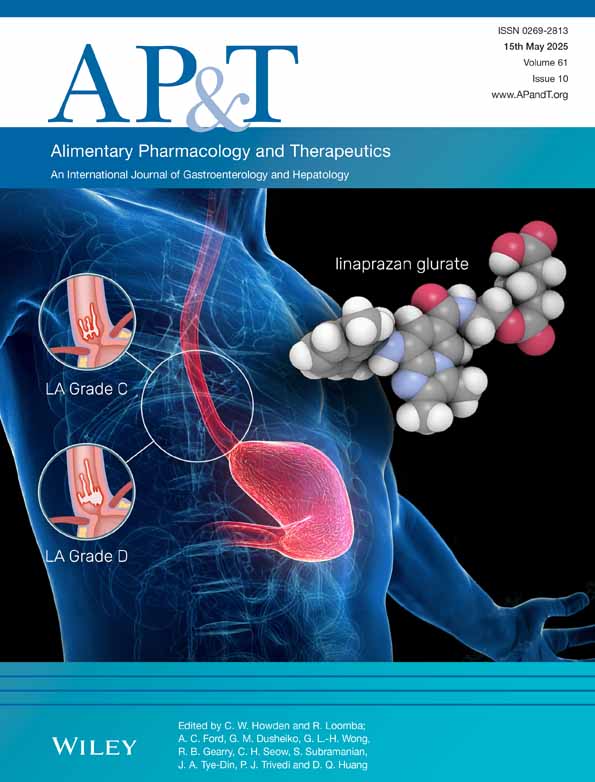Editorial: Obesity and Outcomes on Advanced Therapy in Ulcerative Colitis—The Fat of the Matter: Authors' Reply
Funding: The authors received no specific funding for this work.
We appreciate the editorial by Kuzhiyanjal et al. [1] As obesity becomes increasingly prevalent among individuals with IBD, its clinical implications continue to gain relevance [2]. Obesity has been associated with a more severe phenotype of IBD, characterised by increased disease activity and suboptimal treatment response. We propose that this relationship is primarily driven by visceral adiposity, which refers to the hormonally and metabolically active fat deposited around the viscera. Visceral, as opposed to subcutaneous, adiposity may be the key player behind adverse outcomes in patients with obesity and IBD. Visceral fat can promote a pro-inflammatory state mediated by adipocyte-derived cytokines such as leptin, TNF-alpha, and IL-6 [3]. In a prospective study, visceral adiposity was associated with decreased rates of corticosteroid-free and endoscopic remission [4]. Visceral adiposity has also been associated with decreased time between IBD flares in both Crohn's disease and ulcerative colitis [5]. Furthermore, visceral adiposity has been associated with increased risk of surgery among patients on anti-TNF-α therapy, stricturing in Crohn's disease, and post-operative mortality following ileocolonic resection [6, 7].
We explored the impact of obesity (BMI ≥ 30 kg/m2) on outcomes in ulcerative colitis; elevated BMI was associated with the composite outcome of corticosteroid use, change in advanced therapy, or colectomy within 2 years across several different advanced therapies including anti-TNF agents, vedolizumab, ustekinumab and Janus kinase inhibitors (JAKi) [8]. Given the confines of a database study, BMI was the only possible measure of obesity. In keeping with prior studies, we hypothesized that BMI may serve as a surrogate measure for visceral adiposity, as patients with increased visceral fat probably exhibit higher BMI. BMI is also convenient in routine clinical practice. However, it remains an imperfect measure, and its association with adverse IBD outcomes is inconsistent. For instance, in a multi-centre cohort study, of patients with IBD starting a new biologic therapy, BMI was not associated with hospitalisation, IBD-related surgery, or serious infection [9]. Additionally, in a pooled analysis of four clinical trials (ACCENT-1, SONIC, ACT-1, and −2), there was no significant association between BMI and clinical remission, clinical response, or mucosal healing in Crohn's disease or ulcerative colitis [10].
We agree with Kuzhiyanjal et al. in that future studies examining the true impact of the relationship between obesity and IBD disease activity should utilise both BMI and visceral adiposity. It would be prudent to establish a relationship between these two exposure variables and the outcomes of disease activity—ideally endoscopic and histologic. Furthermore, studies should be carried out prospectively with the ability to adjust for co-variables such as smoking, steroid use, presence of ostomy and baseline disease activity.
We look forward to future prospective studies to elucidate more clearly the relationship between visceral adiposity, BMI and outcomes in IBD.
Author Contributions
Aakash Desai: writing – original draft, writing – review and editing, investigation, conceptualization. Priya Sehgal: writing – original draft, writing – review and editing, investigation, conceptualization.
Conflicts of Interest
The authors declare no conflicts of interest.
Linked Articles
This article is linked to Desai et al papers. To view these articles, visit https://doi.org/10.1111/apt.18513 and https://doi.org/10.1111/apt.70097.
Open Research
Data Availability Statement
Data sharing is not applicable to this article as no new data were created or analyzed in this study.




